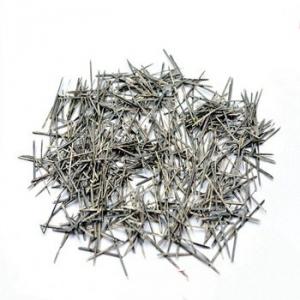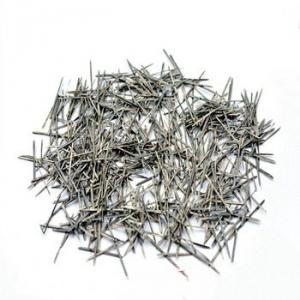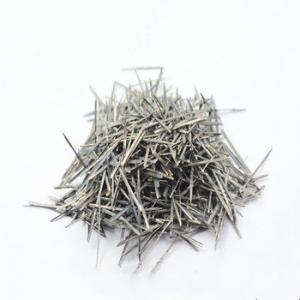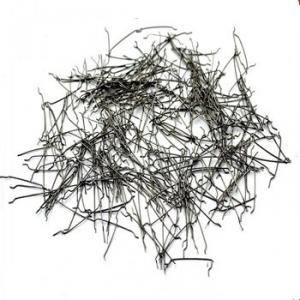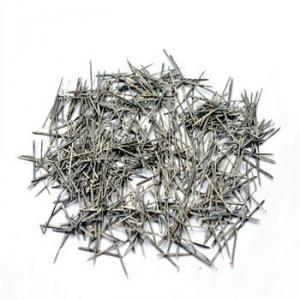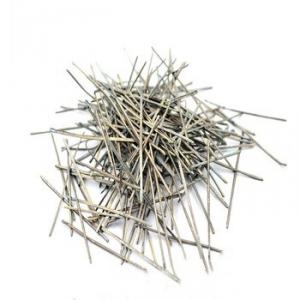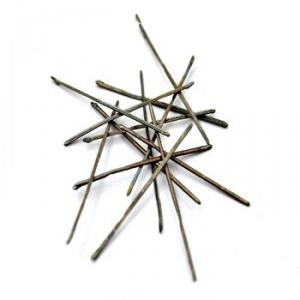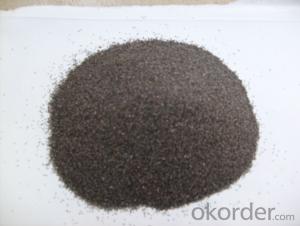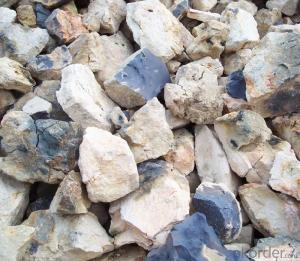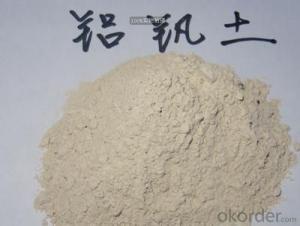AISI304 High Temperature Resistant Micro Stainless Steel Needle
- Loading Port:
- China main port
- Payment Terms:
- TT or LC
- Min Order Qty:
- 20 m.t.
- Supply Capability:
- 100 m.t./month

- OKorder Service Pledge
- Quality Product
- Order Online Tracking
- Timely Delivery

- OKorder Financial Service
- Credit Rating
- Credit Services
- Credit Purchasing
Quick Details
Place of Origin: China
Model Number: 304,310,430,446
Material: Stainless Steel, Stainless Steel
Feature: High quality grade
Standard: ASTM A820
Types: Melt Extracted
Length: 25mm/35mm/19mm
Diameter: 0.3mm-0.7mm
Melting Point: Greater than 1500C
Application: Refractory Industry
Package: In cartons then put into pallets.
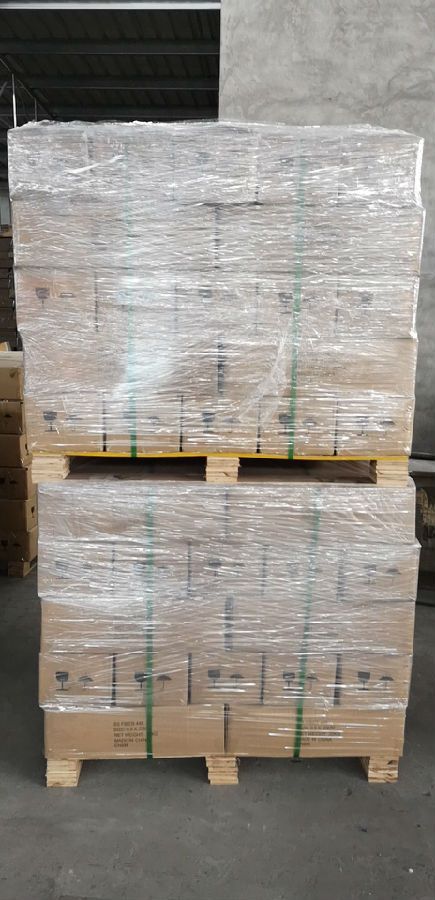
Production process:
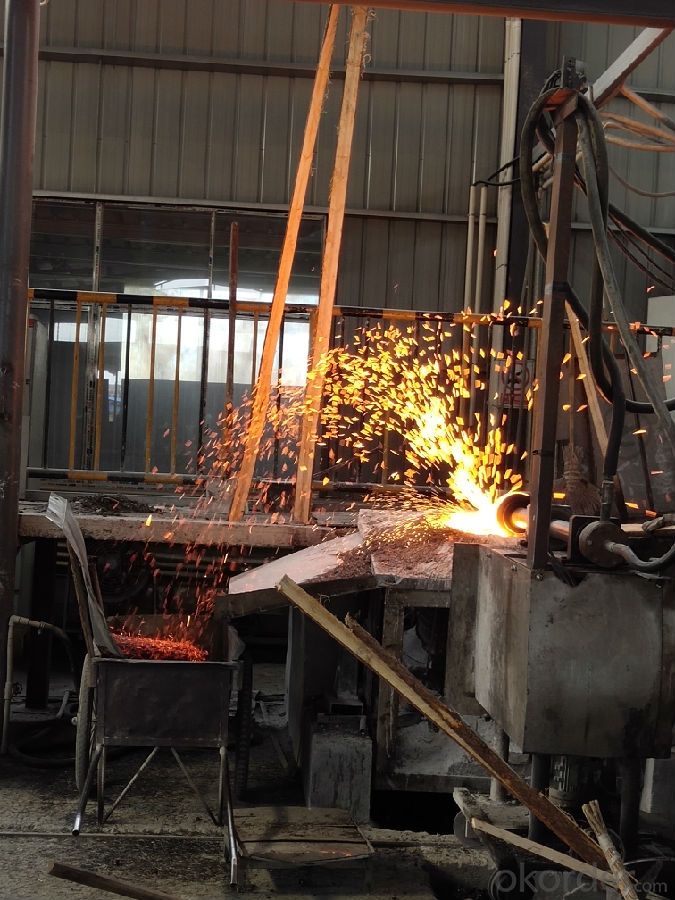
Quality assurance:
1.On a regular basis or as per your request,we entrust national testing agencies to conduct quality inspections
2. Strictly in accordance with the ISO9001-2008 international quality system standard,we monitor and manage the whole process throughout production,quality testing,and measurement to ensure product quality
FAQ:
Q: What kind of payments does your support?
A: T/T, L/C, Cash are accepted.
Q: Do you charge for the samples?
A: Accordeing to our company policy, the samples are free, we only charge the freight fee. And we will return the freight fee during the next order.
Q: Can you produce according to customers' design?
A: Sure, we are professional manufacturer.
Q: Do you have other products?
A: Yes, please check the pictures:
Test Report:
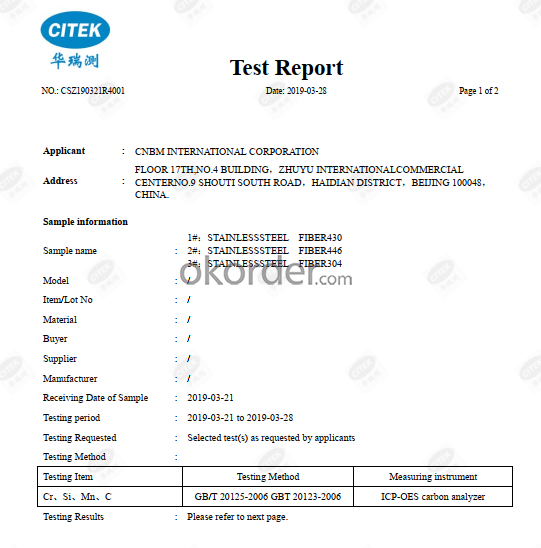
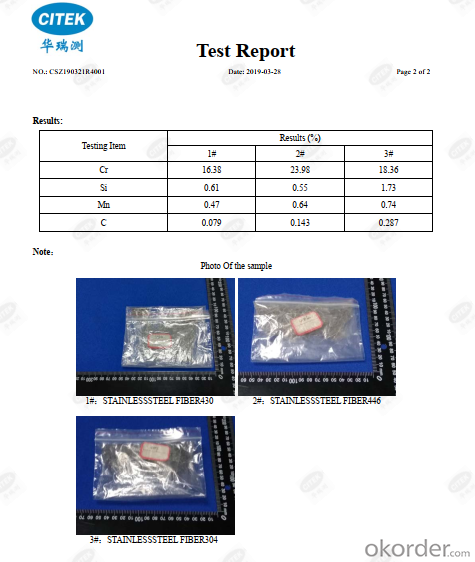
- Q:Can anyone tell me what material the first rate fire resistant door is?
- Material of Class A fire doors mainly are steel, wood, steel and wood, and other materials. Fire door is one of the measures of the building fire separation, usually used on the firewall, entrance and exit of staircase or tube well openings, which is required to hane the abilities of smoke insulation and fire insulation. Fire door plays an important role in prevention of the spread of smoke and fire and the reduction of fire loss. Therefore, we must have strict requirements. Fire doors are divided into class A, class B and class C, whose properties of fire-resistant thermal insulation and fire-resistant integrity should be no less than the following values: Class A should be1.50h; class B should be1.0h; Class C should be 0.5h. - stipulations in article 4.5.1.2 in "The New Standard of Fire Doors" GB12955-2008. I hope my answer can help you. Thank you.
- Q:Graphite and other carbon materials may be oxidized to CO or CO2 at high temperatures. But why can they be refractories?
- There is no contradiction for this. Any substance can be combustible, but different materials have different ignition points.There are many types of graphite. Pyrolytic graphite has a much lower ignition point. Therefore, as long as it reaches at a certain temperature, it can convert into graphite. Mostly, in practical applications (such as brake pads will add a certain amount of graphite), graphite is required to have refractoriness of below 1000 ℃. Graphite can serves as both the combustible and refractory material. So, it can be used as a fire-resistant and high-temperature-resisrant material because graphite (lamellar graphite) has a ignition point of at least 3000 degrees in an oxygen free condition. The above information is for reference only and is offered by Xin Ruida Graphite Company.
- Q:which kind of refractory is commonly used in the industry
- Like silicon, magnesium calcium and metallurgy refractories, glass, silicon, etc., knowing the basic materials, and the businesses are not the same. I suggest that you can buy the refractory book to read.. Others include zircon, shapeless refractory material and so many other cement, such as magnesia, high alumina,ect.. Iron making is using the acidity material, continuous casting is using the clay, nonferrous metals and other types of more complex hot-press charcoal; steel making is using the alkaline, magnesium chrome, magnesium carbon, and clay,etc..
- Q:What is the concept of lightweight refractory material?
- Lightweight refractory material has high porosity, mechanical strength and erosion resistance. Compared with normal refractory bricks, it is a kind of refractory material with large volume shrinkage in high temperature, low thermal conductivity and small bulk density. It is used as thermal insulation material in industrial furnace and other thermal equipments. It has poor wear resistancel.
- Q:Technical scheme of refractory for refuse incinerator
- Refractory technical index1. Physical and chemical indexes of graphite brickThe volume density (g/m3 = 1.6)The compressive strength (Mpa = 23)Apparent porosity is less than 21Ash% less than or equal to 0.5The thermal conductivity at room temperature (W/M.K = 45)200 c = 43600 C = 40800 C = 352, N-4 clay brick physical and chemical indexesRefractoriness 1690Load softening temperature of more than 1300 startThe change of reheating line is%1350 DEG C * 2H - 0.5 to +0.2Apparent porosity is less than 24The compressive strength (Mpa = 20)
- Q:Pals who know something about fire resistant material please tell me how many types of refractory material there are
- Refractory materials used in special applications include high temperature oxcide, such as alumina, lanthanum oxide, beryllium oxide, calcium oxide, zirconia and other, refractory compounds, such as carbides, nitrides, borides, silicides and sulfides; high temperature composite materials, mainly contain metal ceramic, high temperature inorganic coatings and fiber reinforced ceramics.
- Q:What is the strength of high strength refractory material?
- Refers to constrcuting through ramming, and a refractory materials that is hardened in temperature higher than normal. mixed through a certain grade of refractory aggregate, powder, binder, additives, water or other liquids. Can be classified into high alumina and fireclay, magnesite, dolomite, zirconium and silicon carbide by the standard of texture.
- Q:Development trend of refractory industry
- China announced that from 2004 January, the export of most refractory raw materials will be cancelled, and the export of finished products will also reduce the tax rebate rate. This means that important raw materials for further export restrictions, some developed countries dependent on imports of China's refractory materials and products of the refractories industry will have a major impact. In order to reduce costs, they will move their factories to Chinese, which is the development of Chinese refractories industry will also be an important opportunity. In addition, the convenience of communication and transportation, the change of the international market and the increase of e-commerce have also brought good opportunities to the development of refractory industry.
- Q:What refractory material does cupola lining use?
- In order to improve the service life of the lower wall and the bottom leather, dense and high alumina brick can be used for masonry. The front furnace is composed of the bottom, the wall and the top. The top of the furnace is vaulted or hanging flat roof. The front furnace body is usually made of clay brick and high alumina brick, and the bottom work floor is rammed with ramming material. The material is the same as that of cupola furnace. The bridge and the front guard taphole, slag hole and other parts due to erosion by high temperature molten iron and slag erosion, lower service life, frequent repairs. Large blast furnace adopts hot blast or oxygen enriched blast, which has higher temperature and higher production capacity... The damage is faster, and it is hard to maintain production by using clay brick or high alumina brick. Should be used aluminum, carbon or corundum refractory silicon carbide castables pouring or tamping, so that the integrity of good, high strength, corrosion resistance, and therefore significantly improved service life, generally up to one year or so. Refractory materials, including chimneys and spark traps, are used in other parts of the cupola. The chimney and the cupola shaft directly connected with the shell made of steel plate, lined with ordinary clay brick, can also be used ordinary refractory castable pouring. The chimney is provided with a furnace heat exchanger, which can preheat the air to 300~500 DEG C, and the spark collector is used for catching the hot coke and dust particles brought out in the flue gas. The chimney at the top of the reflector (cover) by plate welding, can also be used to cast iron, its lining refractory coating or spraying paint.
- Q:What is the fire endurance of fireproof glass cotton?
- Good thermal insulation and thermal insulation. thermal insulation and thermal insulation depends on the heat conductivity coefficient of glass?silk λ=0.043W/m2K. good fireproof?performance, it's fire-resistant capacity is more than 1000 ℃.
1. Manufacturer Overview |
|
|---|---|
| Location | |
| Year Established | |
| Annual Output Value | |
| Main Markets | |
| Company Certifications | |
2. Manufacturer Certificates |
|
|---|---|
| a) Certification Name | |
| Range | |
| Reference | |
| Validity Period | |
3. Manufacturer Capability |
|
|---|---|
| a)Trade Capacity | |
| Nearest Port | |
| Export Percentage | |
| No.of Employees in Trade Department | |
| Language Spoken: | |
| b)Factory Information | |
| Factory Size: | |
| No. of Production Lines | |
| Contract Manufacturing | |
| Product Price Range | |
Send your message to us
Similar products
New products
Hot products
Related keywords
You Might Also Like
